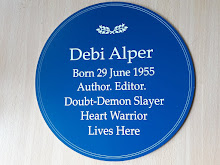The National Portrait Gallery has an exhibition of photographs of women writers from 1920 to 1960.
'Being single, and having some money, and having the time - having no men, you see' was how the writer Ivy Compton-Burnett rather bluntly explained why so many women were writing fiction after the First World War. The photographic portraits in this display were made in the period 1920 to1960 when the majority of fiction was written by women, a phenomenon that can also be explained by improved access to education and society's growing acceptance of the working woman.
The writers of this new wave of women's fiction were professional and prolific - by the age of thirty-two Pamela Frankau had published twenty books and Enid Blyton could produce a children's book in five working days. The popular romance writer Ruby Ayres declared she 'wrote for money' and in 1955 told the Daily Mail about her creative process; 'First I fix the price, then I fix the title, then I write the book'. She could write as many as 20,000 words a day.
Virginia Woolf believed that women's fiction in the 1920s was 'far more genuine and far more interesting to-day than it was a hundred or even fifty years ago'. The diversity of women writers over these four decades is remarkable. This display includes crime, romance and children's writers, literary and 'middle-brow' novelists, and those who tackled issues of female sexuality, and faced scandal. The photographers in this collection include Paul Tanqueray, Cecil Beaton and Man Ray; the images range from studio portraits to portraits of the writer at work.Yummy.


1 comment:
Interesting...
Post a Comment